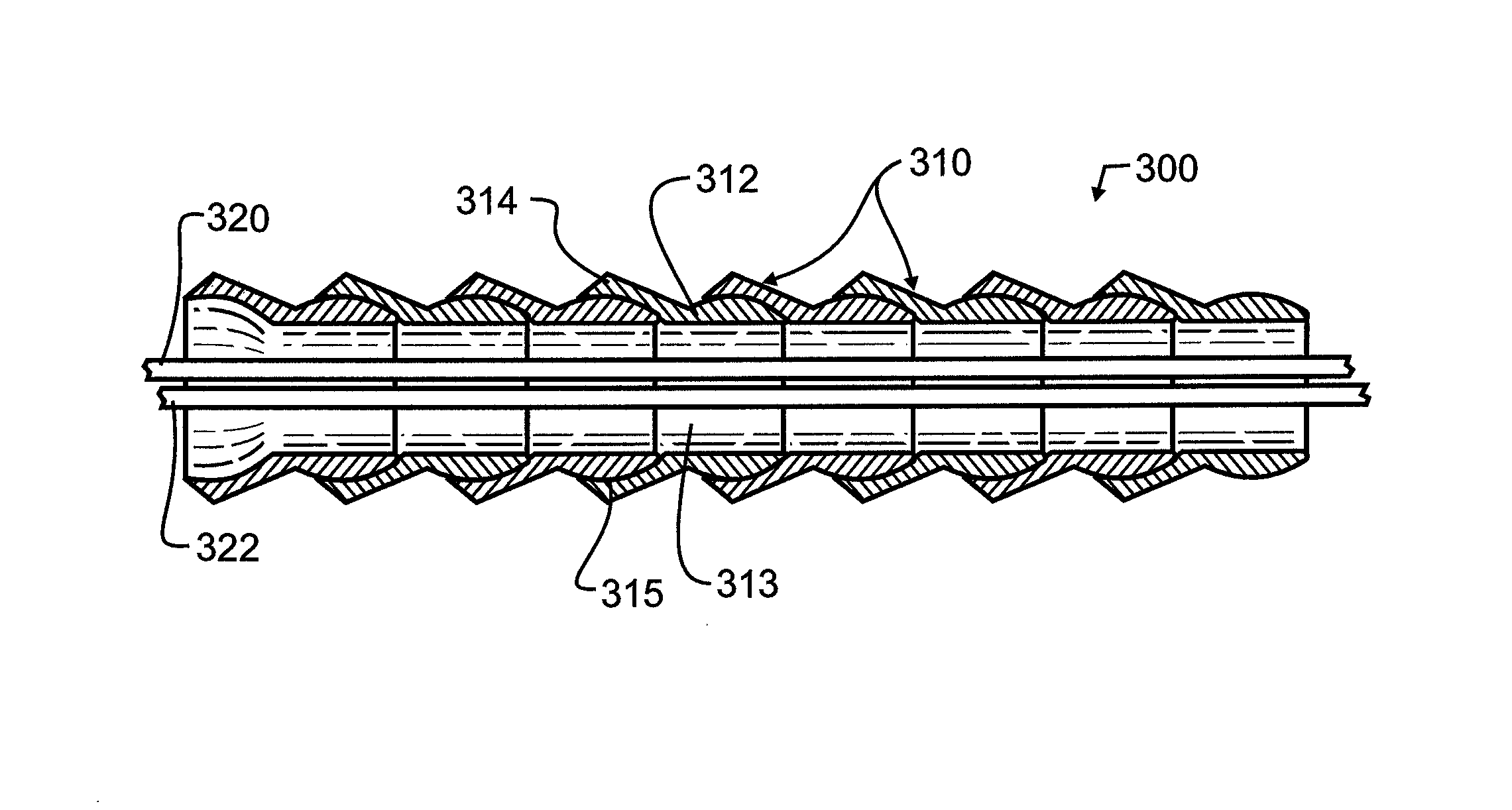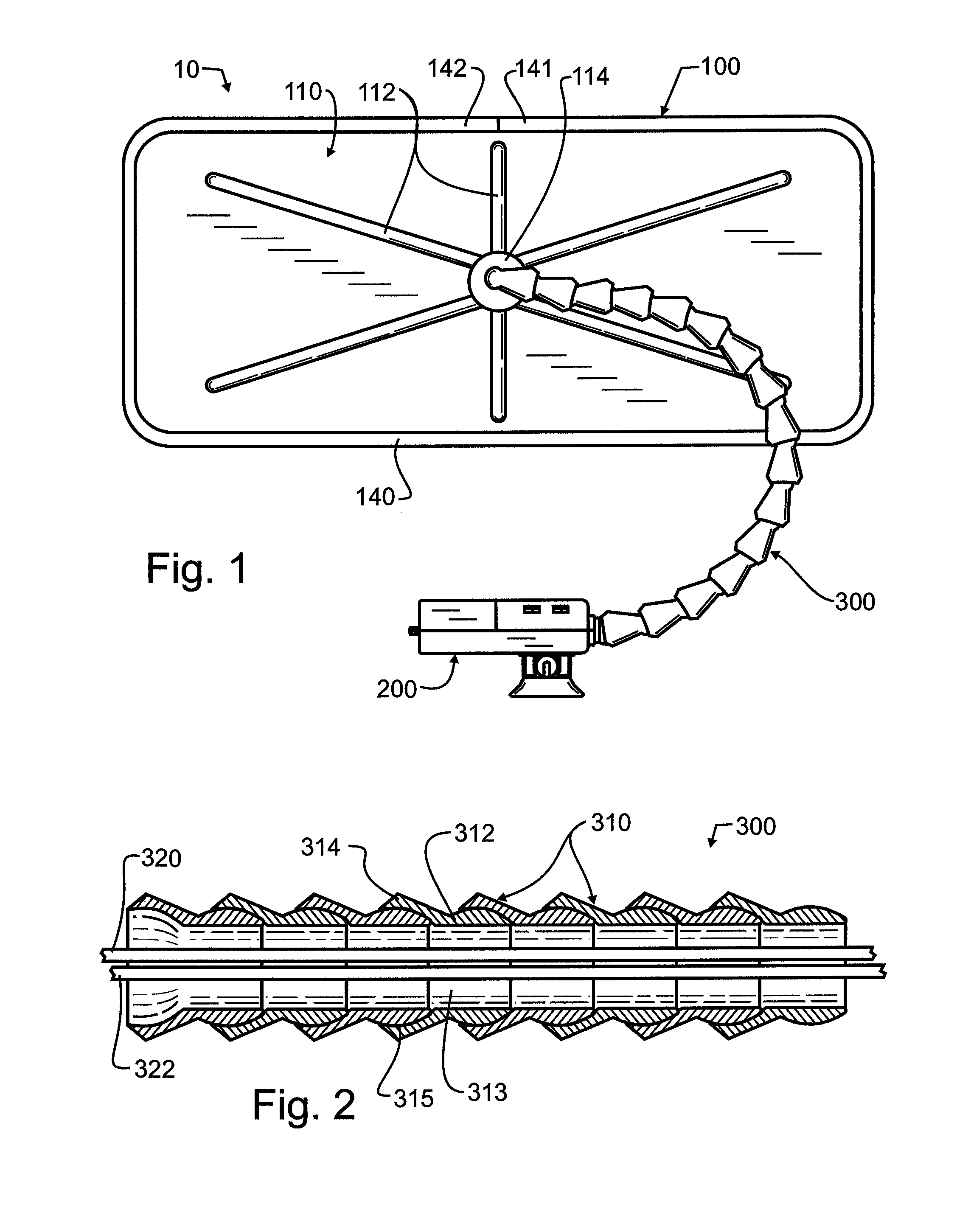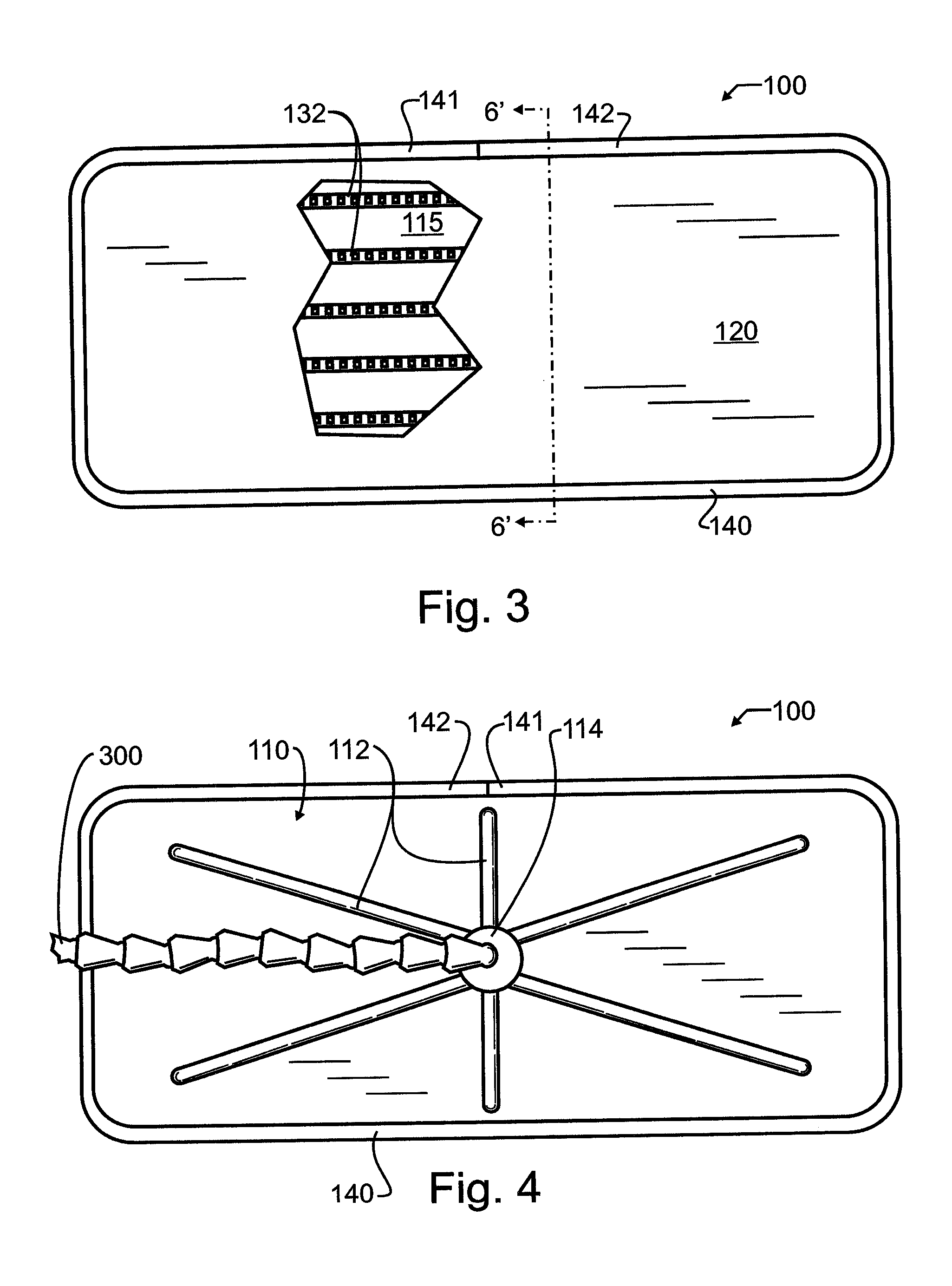LED dent repair and detail light
a technology of detail light and dent repair, which is applied in the field of illumination, can solve the problems of affecting the illumination pattern ofaffecting the illumination pattern, and the relatively thin sheet metal is susceptible to denting, etc., and achieves the effect of not affecting the paint on the painted work surface, enabling controllable spacing, and improving illumination pattern
- Summary
- Abstract
- Description
- Claims
- Application Information
AI Technical Summary
Benefits of technology
Problems solved by technology
Method used
Image
Examples
Embodiment Construction
[0039]Manifested in the preferred embodiment as illustrated for exemplary purpose in FIG. 1, the present invention provides a paintless LED dent repair and detail light 10. Three separate modules make up the paintless LED dent repair and detail light 10, including an LED light module 100, a PDR light module power supply 200, and a ball and socket neck 300 coupling LED light module 100 to PDR light module power supply 200. Most preferably, ball and socket neck 300 is sufficiently stiff to rigidly support LED light module 100 from PDR light module power supply 200, even during minor vibration or physical disruption, until a manual force sufficient to overcome the static friction within ball and socket neck 300 is applied.
[0040]Ball and socket neck 300, illustrated in greater detail in FIG. 2, will for exemplary purposes comprise a plurality of repeating neck sections 310, each having a ball portion 312 which defines a somewhat spherical exterior, and a socket portion 314 defining a so...
PUM
| Property | Measurement | Unit |
|---|---|---|
| Strength | aaaaa | aaaaa |
Abstract
Description
Claims
Application Information
 Login to View More
Login to View More - R&D
- Intellectual Property
- Life Sciences
- Materials
- Tech Scout
- Unparalleled Data Quality
- Higher Quality Content
- 60% Fewer Hallucinations
Browse by: Latest US Patents, China's latest patents, Technical Efficacy Thesaurus, Application Domain, Technology Topic, Popular Technical Reports.
© 2025 PatSnap. All rights reserved.Legal|Privacy policy|Modern Slavery Act Transparency Statement|Sitemap|About US| Contact US: help@patsnap.com



